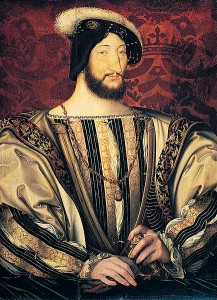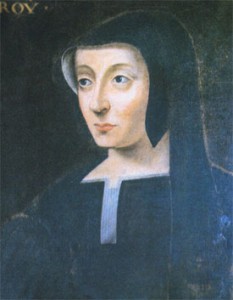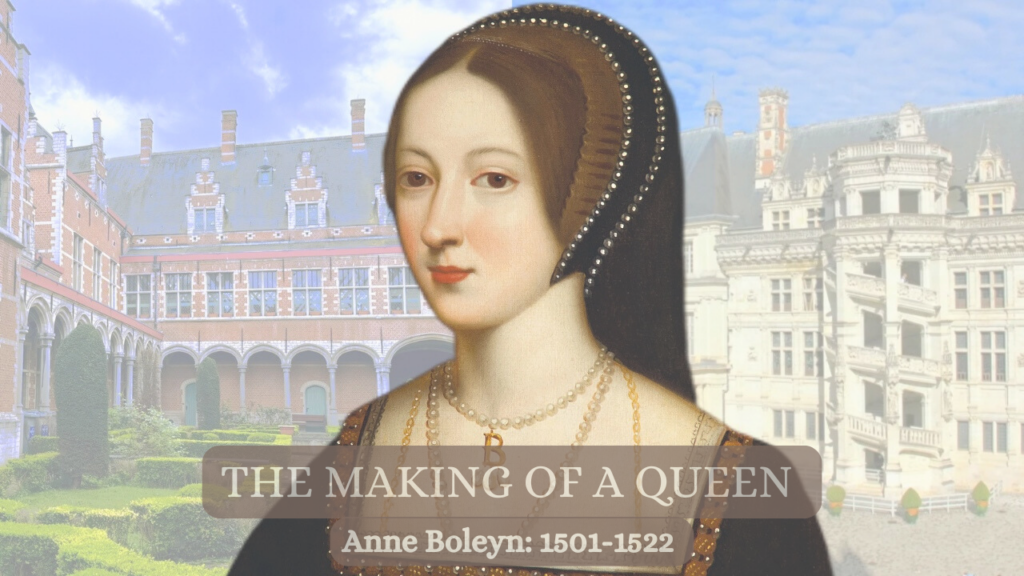Today’s post is a guest article by Dr Glenn Richardson. It is a work in progress and Dr Richardson would very much appreciate any comments or contributions that may assist with his research.
The French miniatures of 1526 and a painter from the French court in England in 1522 – work in progress
By Glenn Richardson
The 1526 gifts
As cordial relations between England and France revived after the war of 1523-25, so did the cultural competition between Francis I and Henry VIII.[i] In late November 1526 two decorated gold devices, something like large lockets containing the portraits of Francis I and his two eldest sons were brought to England by the secretary of the king’s sister Marguerite, duchesse d’Alençon. The decorative design of one of the lockets featured the capital ‘F’ of Francis and a stylised representation of England and France liked across the Channel. The other locket featured pictures of Francis’s two elder sons then being held hostage in Spain for their father’s performance of obligations under the treaty of Madrid, by which he had gained his freedom after a year as the emperor’s prisoner following his defeat at the battle of Pavia in February 1525.
The gifts were thus clearly part of French efforts to secure English help against Charles V and especially in getting the two boys home. Gasparo Spinelli, the secretary to the Venetian ambassador then in England, noted that the lockets and their contents caused a great stir in the English court. Spinelli’s report that the gift had been brought by Marguerite d’Alençon’s secretary has led to the supposition, now maintained for some time as fact, that the gifts were also commissioned by her. However, there is some circumstantial evidence which suggests that they might actually have been personal gifts from Francis I himself.[ii]
On October 28 1526 the French ambassador in England, Charles du Solier, seigneur de Morette, one of the Francis I’s longest serving gentilhommes de la chambre, wrote to Anne de Montmorency the Grand Maître of France:
Sir, you know that some time ago the king wrote
that he wanted to send with me a present [that is
to say the three portraits ]which he intended to give
to the king his good brother/ You also
know that I have not been able to bring it because
at the time of my leaving it was not ready.[iii]
He went on to ask that the gift be sent now so that it could be given before his embassy concluded. He and Montmorency clearly regarded the gift as Francis’s and it was probably de Solier, not the secretary, who actually presented the gift to Henry. On November 8 he again wrote to Montmorency asking for the gift to be sent so that it could be presented after which he could return to France.[iv] Spinelli’s letter is dated 2 December suggesting that the presentation happened quite shortly beforehand and de Solier left England.
The second piece of evidence and in one way the most compelling that the 1526 portraits gifts were indeed sent from Francis I, not his sister, is Henry VIII’s reaction to them. The gifts’ ingenuity reflected the expertise at the French court and the personal style of the king. Doubtless the precise origin of the gift is of secondary importance in the history of the English miniature, but it was not so for Henry. According to the pattern of strict reciprocity between himself and Francis established during the previous decade, he responded in kind. As is well known, in 1527 he sent to Francis miniatures of himself and Princess Mary which were probably done by the Horenboute; a family of Flemish artists working at the English court. These were the first miniatures produced in England and were presented in June 1527.
John Clerk, the English envoy at the French court reported that on seeing Henry’s picture, the king removed his bonnet (a gesture of respect which he frequently accorded Henry’s letters as well, and in itself a form of gift) and said ‘Je prie Dieu que il luy donne bonne vie et longue.’ Clerk reported that in addition to the portraits, the king liked the ‘devices’ in which they were presented. The design of these lockets has not received any comment to date by art historians, but a letter which Anne de Montmorency wrote to Wolsey on 3 December 1527 on behalf of the king’s mother, Louise de Savoie, who was apparently then suffering from gout and could not write herself, gives the clue. It refers to Louise’s delight at seeing:
The beautiful and noble present of the heart
of gold in which is painted the likeness and image
of the king of England, which Madam loves no
less heartily than does the king her son, to whom
it was wonderfully agreeable.[v]
The intimate language of reference here, with Louise de Savoie apparently giving a mother’s doting attention to the portrait of her son’s best friend seems odd at this distance but, seen in context, it was clearly part of the effort on both sides to create an ideal of familial cooperation between the two regimes. Such language, which is more usually observed in the context of marriage treaties, is striking here and is another aspect of the rituals of gift-exchange between the two courts.
Bellin in England?
Fours year earlier there was perhaps another ‘gift’ sent by Francis to Henry, not a painting but a painter. In February 1522 William Fitzwilliam, the English ambassador at the French court, wrote to Wolsey that Anne de Montmorency was arranging to send ‘a painter and guilder speedily’ to England.[vi] In April he reported that he had recently sat to a French artist who was about to go to England and who was highly regarded and ‘reckoned as coming next unto the king’s painter that is sick and who they fear will never recover.’[vii] Unfortunately there is no subsequent reference enabling a positive identification of this artist, or to prove, as seems likely, that he was also the guilder to whom Fitzwilliam referred in February. However, one suggestion may be offered.
The French household payment rolls show that in 1521 Francis I’s top four artists were Jean Pérréal, Jean Bourdichon, Niccolò Bellin da Modena and Jean Clouet.[viii] Pérréal was certainly the king’s most eminent painter but was nearly always referred to in the payment rolls and elsewhere as ‘the Paris painter’ rather than ‘the king’s painter’. The second artist on the 1521, Jean Bourdichon, was called simply ‘painter’. From 1522 Bourdichon disappears from the payment rolls and he is presumed to have died during that year.[ix] It seems reasonable therefore to conclude that it was Bourdichon whom Fitzwilliam identified as the ailing painter in 1521.
The artist ‘next’ to him on the payment rolls at least was therefore either Niccolò Bellin or Jean Clouet. Of the two, Bellin is the more likely candidate. More significant than his position next to Bourdichon on the 1521 payment roll, is the fact that Bellin, unlike Clouet, was indeed a guilder as well as painter. He later worked for Francis I under the direction of Primaticcio at Fontainebleau and for Henry VIII at Nonusch and Whitehall.[x] Curiously Bellin also disappears from the household records after 1522.[xi]
There are no records of Henry VIII’s payments between 1522 and 1528 so there is no way of telling whether he paid Bellin for any work at this time. The artist is known to have come to England in 1537, but the date of his disappearance from the French household records, together with Fitzwilliam’s ambiguous letter, allows a hypothesis that Niccolò Bellin may have first come to England as early as the latter part of 1521 or sometime in 1522. If he did come then it was probably only for a short time. It seems that by the mid 1520s he was in Mantua working under Giulio Romano and he was back in France, with Primaticcio, in 1532.[xii]
[i] For a fuller discussion see G. Richardson, Renaissance Monarchy: The reigns of Henry VIII, Francis I and Charles V (London, 2002); Tudor England and its Neighbours (London: Palgrave 2005), co-edited with Susan Doran Chapter 3 ‘Eternal Peace, Occasional War: Anglo-French Relations under Henry VIII’
[ii] G. Lebel, ‘British-French Artistic Relations,’ Gazette des Beaux-Arts, 1 (1948), pp.267-80, esp. pp.272-3; Strong, pp.27 and 29; D. Starkey, Henry VIII: A European Court in England (London 1991), p.91. K. Coombs, The Portrait Miniature in England (London, 1998), p.18.
[iii] Musée Condé MS Series L, II, fo.40. Morette to Montomorency 28 October 1526
[iv] Ibid, fo.45. Morette to Montmorency 8 November 1526 ‘Monsieur je vous ay escript par le courier depesche du xxix jour de ce moys passé vous priant monsieur vouloir donne ordre que le present que vous savez me soit envoie affin que l’ayant present je m’en puisse retourner devers vous.’
5 Musée Condé MS Series L, VIII, fo.17 [LP IV ii, 3636 and 3634] ‘Le beau et noble present du coeur d’or auquel est imprainte l’effigie et ymaige du roy d’Angleterre que madam n’ayme moings cordiallement que le roy son filz luy a esté à marveilles agréable.’
[vi] SP1/21, fo. 202 [LP III i, 1160] Fitzwilliam to Henry VIII.
[vii] SP1/22 fo.7 [LP III i, 1227] Fitzwilliam to Henry VIII, undated, circa 15 April 1521.
[viii] BN, MS français, 21449, fos.5ff. esp. fo.82; P. Mellen, Jean Clouet (London, 1971), pp.12-13.
[ix] Ibid; AN, KK 98, fo.9v ‘Jehan de Parys’ is followed immediately by ‘Jehannot Clouet aussi peintre’ on the 1523 household payment roll.
[x] M. Biddle, ‘Nicholas Bellin of Modena, An Italian Artificer at the Courts of Francis I and Henry VIII,’ Journal of the British Archaeological Association, 3rd series, 29 (1966), pp.106-21. More generally see A. Blunt, ‘L’influence française sur l’architecture et la sculpture decorative en Angleterre pendant la premiere moitie du xvie siècle,’ Revue de l’Art, 4 (1969), pp.17-29.
[xi] AN, KK 98, fo.9v noted above.
[xii] Biddle, pp.107-8 on Bellin’s return to Mantua.



















Latest Comments